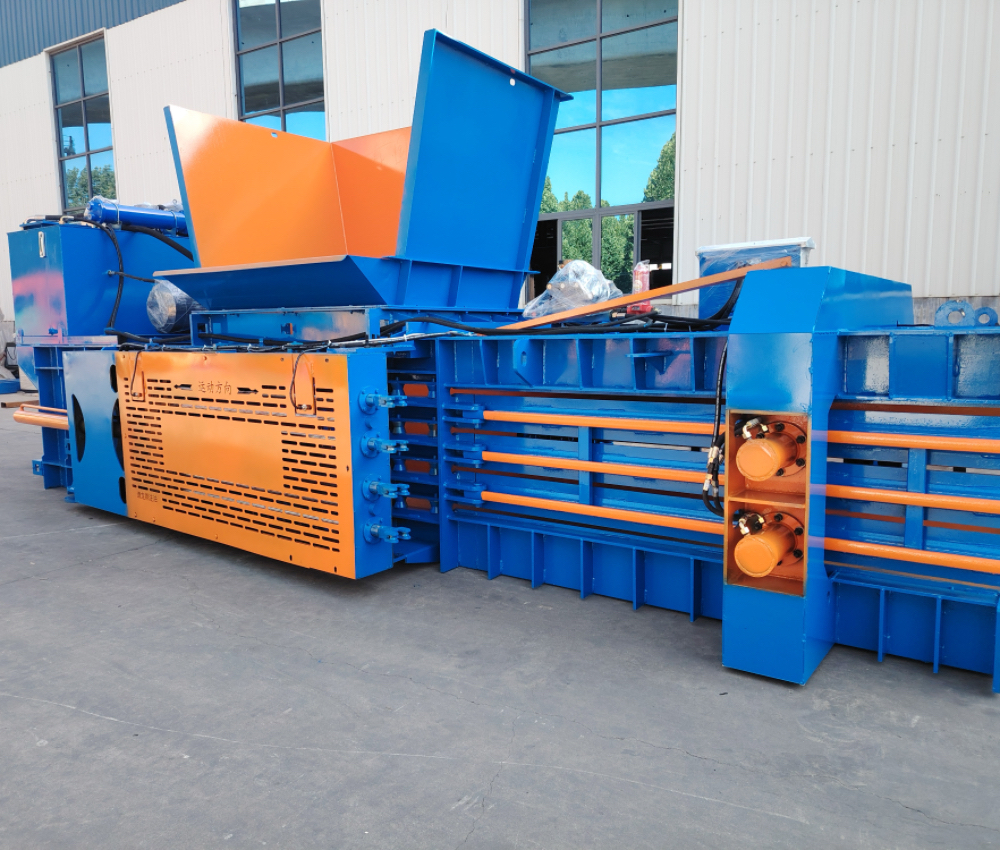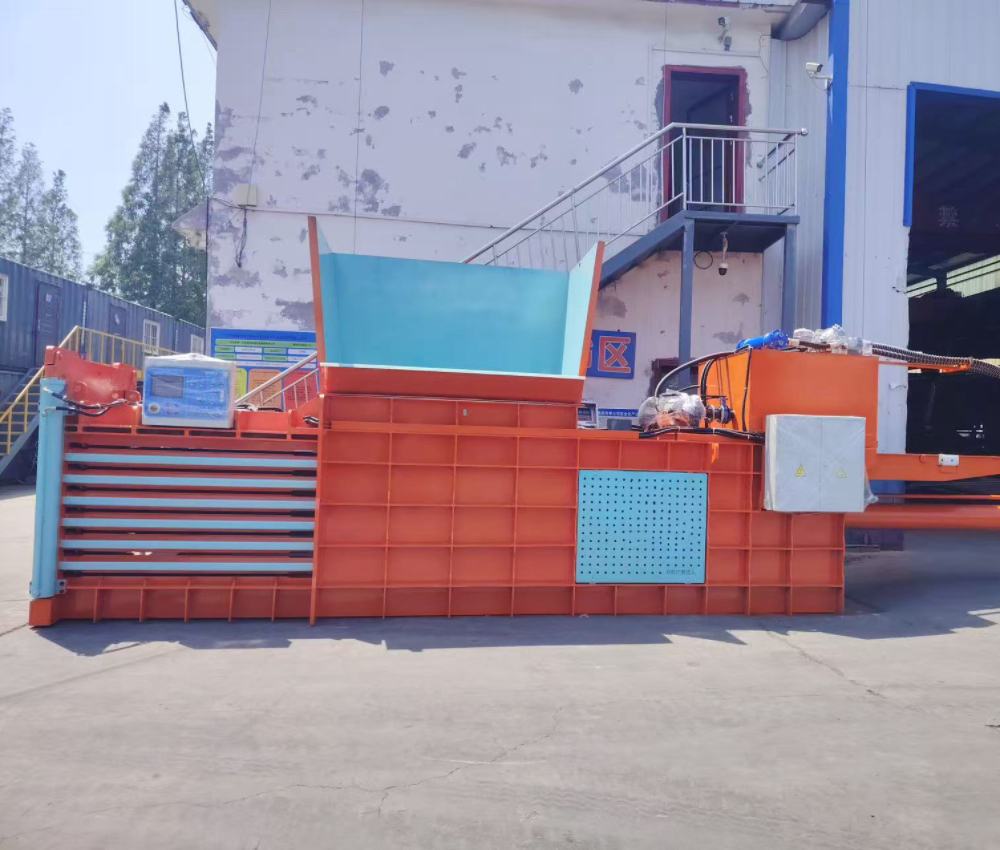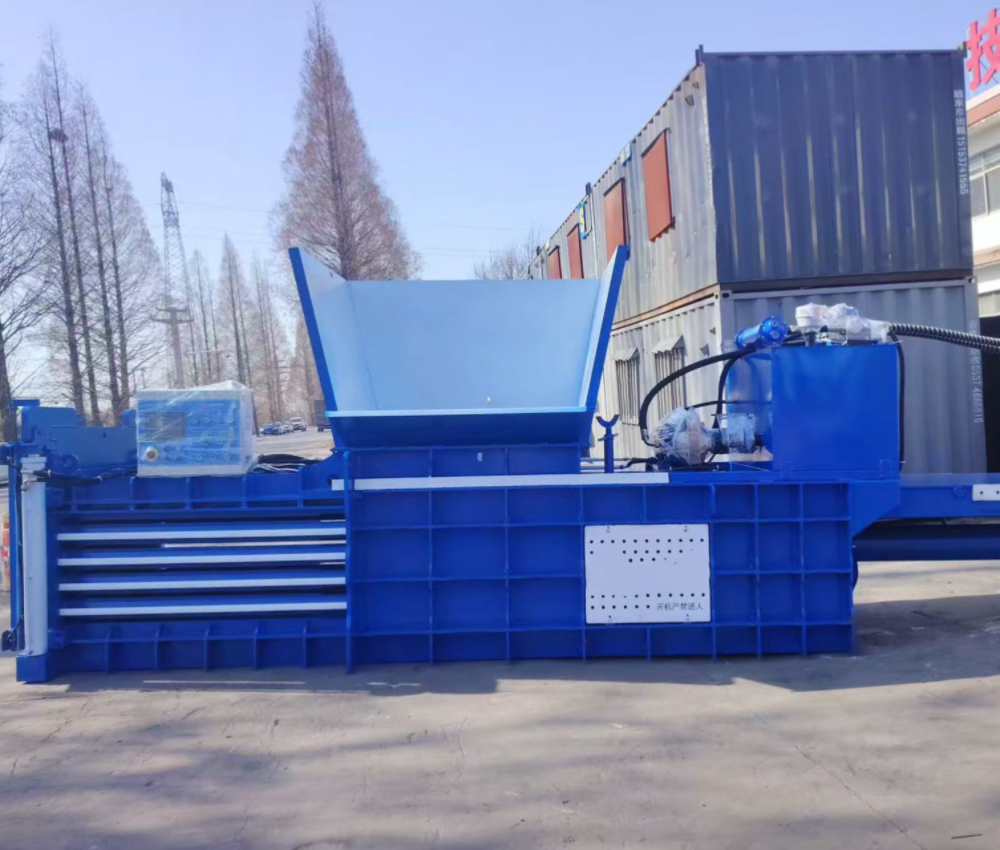What Is A Fully Automatic Horizontal Baler Machine

A Fully Automatic Horizontal Baler Machine is an advanced piece of recycling equipment designed to compress and bale large volumes of waste materials such as paper, cardboard, plastic film, PET bottles, or textile waste. Unlike manual or semi-automatic balers, a fully automatic model handles the entire baling process—from feeding and compressing to strapping and ejecting—without human intervention.
It features a horizontal structure with a long pressing chamber, a powerful hydraulic system, and an automatic wire-tying mechanism. The continuous feeding design allows for uninterrupted operation, making it an ideal choice for recycling centers, paper mills, logistics hubs, and waste management facilities.
Simply put, this machine is built to turn massive piles of waste into neatly packed, high-density bales—saving space, time, and labor.
Why You Need A Fully Automatic Horizontal Baler

1. Maximize Efficiency And Productivity
The machine’s automation enables continuous operation, significantly increasing output. It can handle several tons of material per hour, which reduces manual labor and shortens processing time.
2. Save Labor Costs
Because it operates automatically—from feeding to tying—the need for constant human supervision is minimal. One worker can oversee multiple balers, lowering labor expenses and improving safety.
3. Ensure Consistent Bale Quality
Each bale is tightly compressed with uniform size and density. This makes stacking, storing, and transportation more efficient, and also increases the resale value of recyclable materials.
4. Improve Workplace Cleanliness
By keeping waste compact and organized, the machine helps maintain a cleaner, safer, and more efficient working environment.
5. Contribute To Environmental Sustainability
Using a fully automatic baler supports recycling and reduces landfill waste. It plays a vital role in modern waste management strategies that promote resource conservation and sustainability.
How To Use A Fully Automatic Horizontal Baler Machine

Operating a fully automatic baler is straightforward once it’s properly installed. Below is a general step-by-step overview:
Step 1: Power On And Setup
Connect the baler to a stable power source and hydraulic system. Ensure all safety checks are completed before operation.
Step 2: Automatic Feeding
Feed materials into the conveyor belt or hopper. The machine continuously draws waste into the compression chamber using sensors that detect material levels.
Step 3: Compression
The hydraulic ram automatically compresses the material under high pressure, forming a dense bale within the chamber.
Step 4: Automatic Strapping
When the bale reaches the preset length or density, the automatic wire-tying system activates. It secures the bale using steel or plastic wires.
Step 5: Bale Ejection
After strapping, the machine ejects the bale onto a trolley or conveyor for easy handling and transport.
Step 6: Continuous Operation
The baler resets automatically and starts the next cycle, ensuring a seamless, high-efficiency workflow.
Key Features Of Fully Automatic Horizontal Baler
-
High Compression Force: Provides strong hydraulic pressure to produce dense bales.
-
PLC Control System: Simple and intelligent operation interface with adjustable settings.
-
Automatic Wire Tying: Reduces manual work and ensures consistent bale quality.
-
Continuous Feeding Design: Keeps the production line running without interruption.
-
Durable Construction: Made with heavy-duty steel and precision hydraulic components for long service life.
How To Choose The Right Model
Selecting the most suitable fully automatic horizontal baler depends on your waste type, processing volume, and operational needs. Here are some key factors to consider:
1. Type Of Material
Different balers are optimized for specific materials:
-
Waste Paper & Cardboard: Choose models with wide feeding openings and moderate pressure (80–150 tons).
-
Plastic Film & PET Bottles: Opt for stronger pressure (150–200 tons) and special anti-rebound devices.
-
Textile Waste: Requires smooth feeding and lower compression speed to prevent fiber damage.
2. Processing Capacity
Estimate how much waste you handle per hour or per day.
-
Small-scale operations: 3–5 tons/hour models are sufficient.
-
Medium to large recycling centers: 8–20 tons/hour capacity balers are recommended.
3. Bale Size And Weight
Consider the transportation and storage methods you’ll use. Adjustable bale length ensures flexibility for different logistics needs.
4. Automation Level
Most modern horizontal balers are fully automatic, but you can choose between:
-
Semi-automatic: Lower cost, manual tying.
-
Fully automatic: Higher efficiency, automatic tying and ejection.
5. Installation Space
Ensure your site can accommodate the machine’s footprint, conveyor, and bale output area. Horizontal balers require more space than vertical types, so plan accordingly.
6. Energy And Power Requirements
Check your available voltage (e.g., 380V/50Hz or 480V/60Hz) to match the machine’s motor and control system.
Maintenance Tips For Long-Term Performance
To keep your baler running efficiently:
-
Regularly inspect hydraulic oil levels and replace filters.
-
Check the wire-tying mechanism for wear and alignment.
-
Keep sensors clean and free from dust.
-
Schedule preventive maintenance according to manufacturer recommendations.
-
Ensure operators receive proper training for safe and efficient use.
Future Trends In Baling Technology
As environmental regulations tighten and recycling industries evolve, modern balers are integrating smart control technologies such as:
-
IoT Monitoring: Remote fault detection and real-time data collection.
-
Energy-Efficient Hydraulics: Variable-speed pumps to reduce energy consumption.
-
AI-Based Sorting Integration: Combine balers with optical sorting systems for higher automation.
-
Modular Design: Easier maintenance and scalability for future upgrades.
These innovations are shaping the future of recycling plants and waste management systems worldwide.
Cost And Return On Investment
The price of a fully automatic horizontal baler varies based on model, pressure rating, and automation features. However, its ROI (Return on Investment) is high because:
-
Labor costs are drastically reduced.
-
Recyclable materials achieve higher resale value due to compactness and uniformity.
-
Facility cleanliness and safety improve.
-
Machine lifespan often exceeds 10 years with regular maintenance.
Most users recover their investment within 1–2 years, especially in high-volume operations.
Conclusion
A Fully Automatic Horizontal Baler Machine is an essential tool for modern waste recycling industries. It simplifies the recycling process, reduces operational costs, and enhances overall efficiency. Whether you handle paper, plastics, or other recyclable materials, investing in a high-quality automatic baler ensures long-term economic and environmental benefits.
By understanding your production needs, material types, and space conditions, you can easily select the ideal model that perfectly matches your recycling goals.
If you’re ready to streamline your waste handling process, a Fully Automatic Horizontal Baler is the smart investment that delivers both performance and sustainability.
